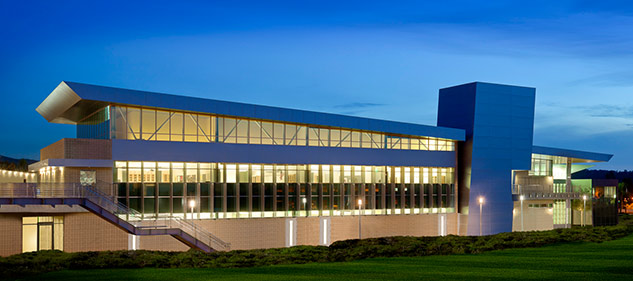Utility Program Helps Fund Retrocommissioning, Upgrades at Santiago Canyon College
The concept of retrocommissioning is not new, but new emphasis and investments in energy efficiency are giving the process greater interest and adoption. One example brings this renewed attention into focus. In 2013, Southern California Edison and Southern California Gas funded a retrocommissioning engineering study to identify energy inefficiencies and related issues with mechanical system operation at the Science Building of Santiago Canyon College near Los Angeles. The Science Center opened for classes in 2010, but concerns about operational efficiency can often arise even in buildings under five years old. Because Santiago Canyon College is part of the California Community Colleges (CCC) system, it falls within the aegis of a unique public sector/private sector initiative established to encourage energy efficiency investments and foster best practices within the system. The CCC/IOU Partnership is comprised of SCE and SCG together with two other statewide investor-owned utilities (IOUs) — Pacific Gas & Electric and San Diego Gas & Electric — and the California Community College Chancellor’s Office.

Santiago Canyon College Science Building
Getting Educated with a Pilot Program
Southern California Edison and Southern California Gas began a pilot retrocommissioning program in 2012. Its purpose was to assist entities of the CCC with the identification and funding of energy efficiency measures that improve the operation of eligible facilities. All campuses identified for this pilot were within the Southern California Edison and Southern California Gas service territories. Previously, CCC participation in retrocommissioning or monitoring-based commissioning was limited because of the high upfront costs associated with such studies and the risks of hiring an retrocommissioning agent without knowing what opportunities existed for savings. The pilot program worked to address both of these issues. It was specifically structured in a way that allowed the utilities to reimburse the campus for the retrocommissioning agent’s investigation, verification, and training costs. It also provided project scoping, screening and technical assistance along the way to maximize the project’s energy savings potential.
An engineering review of the current operation of the Science Building, located on the district’s Santiago Canyon College campus, constituted an essential component of the retrocommissioning process.
Based on whole campus metered usage data, and the known operational inefficiencies of the Science Building, the operation of the building was recorded to establish a base line of energy consumption. The retrocommissioning study identified eight energy-efficiency measures for consideration. After careful review, it was determined that six of the measures provided the optimal return on investment:
• Occupancy-sensor based demand control ventilation (using CO2 sensors integrated into the campus energy management system).
• Variable speed exhaust fan control (using VFDs to vary the speed of the fans and integrated into the energy management system).
• Fan static pressure re-set.
• Equipment scheduling.
• Hot water boiler staging and shut-down.
Over the course of the investigation phase, each measure was analyzed in terms of its potential implementation cost and utility incentive. The calculations were performed based on a collection of real-time usage data, on observations of building operational settings, and through the combined use of spreadsheet calculations, calibrated building models, and industry standard calculation tools provided by the Southern California utilities.
Ultimately, the engineering study focused on optimization of the HVAC, lab, and fume hood systems to determine the current operating condition. A model of the building was developed using the Trane Trace program. To calibrate the energy models to actual building usage and to meet the pilot retrocommissioning, numerous data loggers were installed to record actual operating conditions and trend logs were taken from the building automation system.
Related Topics:













